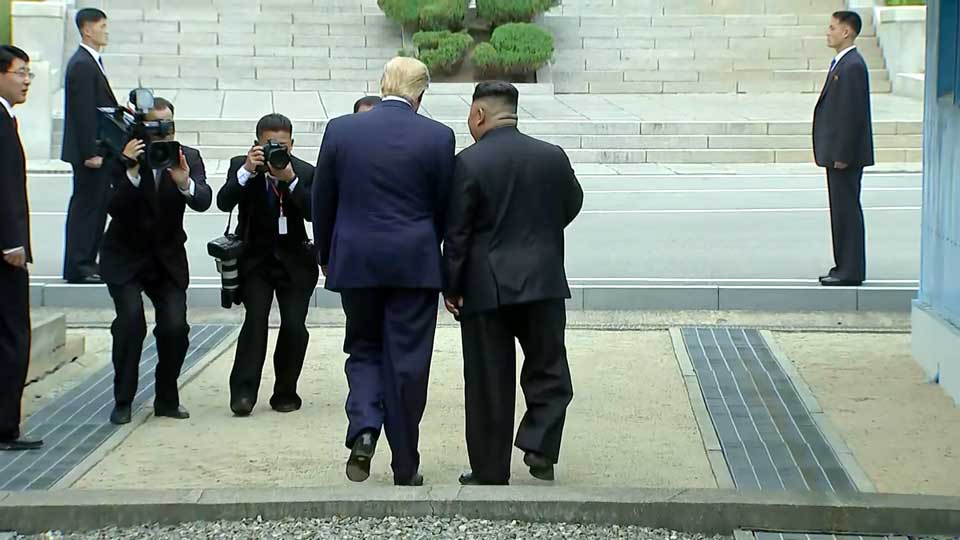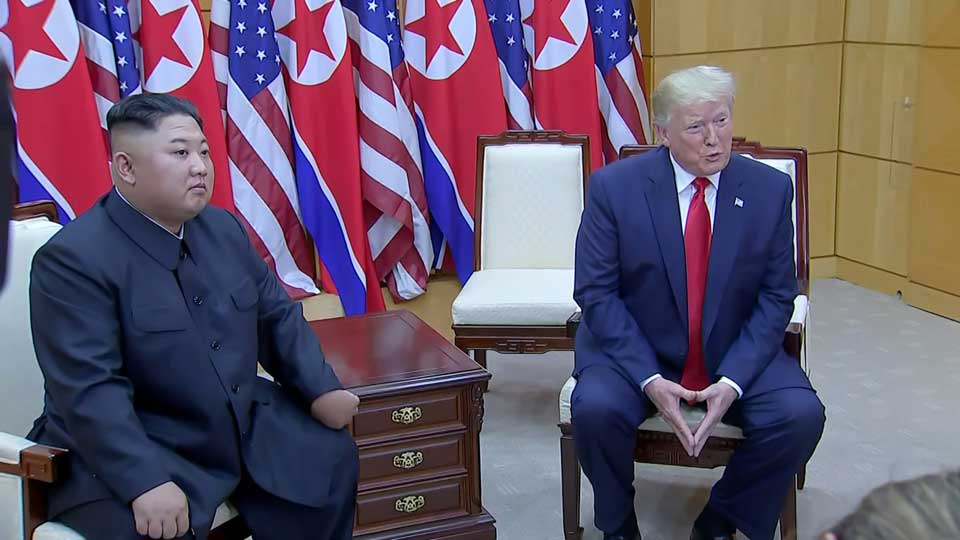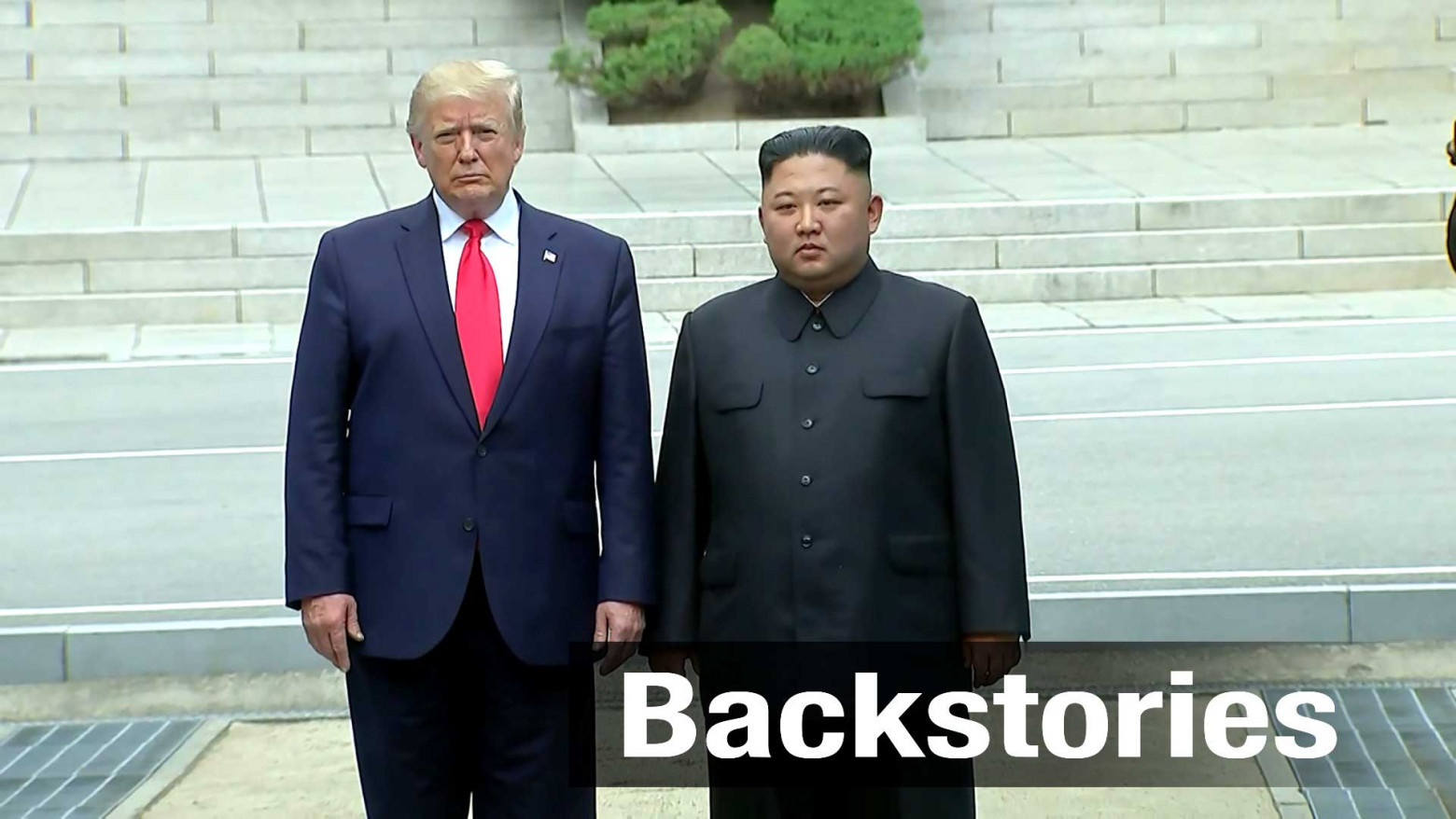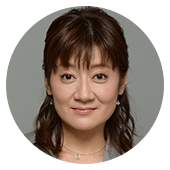Many were skeptical whether security and diplomatic arrangements could be made in time. But just 30 hours later on Sunday afternoon, Trump was in the demilitarized zone, shaking hands with Kim Jong Un.
Trump arrived by helicopter on the South Korean side of the demilitarized zone at 14:45 local time. He was accompanied by South Korean President Moon Jae-in and met US and South Korean soldiers on duty in the area.
Shortly before 4 p.m., Trump walked slowly to the demarcation line between the two Koreas. Kim appeared on the North Korean side and began walking toward him. They looked straight at each other.
Kim told Trump that stepping over the line would make him the first sitting US president to set foot on North Korean soil. He also said it would show Trump's willingness to settle the unfortunate past.
Trump said that stepping across that line would be a great honor.
With the world watching, Trump crossed the dividing line. Kim did the same and entered the South Korean side.

After the meeting, the leaders moved to the Freedom House in the truce village of Panmunjom. They spoke for about 50 minutes on the significance of the meeting for the relationship between their two countries.
Trump told reporters that it was a very good meeting, and that they had agreed to designate a team to resume the stalled denuclearization talks. He said he wanted to see a really comprehensive good deal, and "speed is not the object." The president added that the teams will be set up within two or three weeks.
North Korea's state-run media reported that Kim's historic meeting with Trump attracted worldwide attention, and the leaders expressed great satisfaction over the results of the talks. It also said the two leaders agreed to keep in close touch and work toward a breakthrough in the denuclearization of the Korean Peninsula and in bilateral relations.
US Secretary of State Mike Pompeo said he expects bilateral talks on denuclearization to resume sometime in July.
He told reporters before leaving South Korea on Sunday that the US special representative for North Korea, Stephen Biegun, will lead the talks with officials of Pyongyang's Foreign Ministry. He indicated that Kim is hoping to accomplish something very significant.
Japanese Foreign Minister Taro Kono said on Monday that he supports the proposed resumption of negotiations between the US and North Korea, which have been stalled since the Hanoi Summit in February.

Asan Institute for Policy Studies research fellow James Kim, an expert on North Korean affairs, says, "The meeting was a show but much of foreign diplomacy is a show so I wouldn't add or subtract much meaning from this meeting, except to look more closely at what the two leaders got at the end of the day."
He adds, "What we know is that the working-level talks, which have been on hold for about four months, is now back on track as a result this meeting. So it's good that we can now move ahead beyond Hanoi Summit and we really need to look to see if the two sides can come to some substantive agreement about denuclearization. But so far, nothing has changed as far as denuclearization is concerned. I think there are good reasons why skeptics are out there saying there wasn't much that both men took away from this meeting."
After the meeting, Trump told reporters that sanctions on the North will remain. But he also said "things could happen" during negotiations. Despite that, James Kim says neither side seems keen to soften its position.
"Premature sanctions relief will not be possible without substantial moves on the part of North Korea to denuclearize."
He adds, "We really need to see some substantial movement on denuclearization, dismantlement of sites beyond Nyongbyon for instance. They have to allow for external inspectors to come in, observe and also test out these facilities to see if there are any fissile materials there. While President Trump may have hinted this, his signals are largely conditioned on what the North Koreans are willing to do from this point on out."

